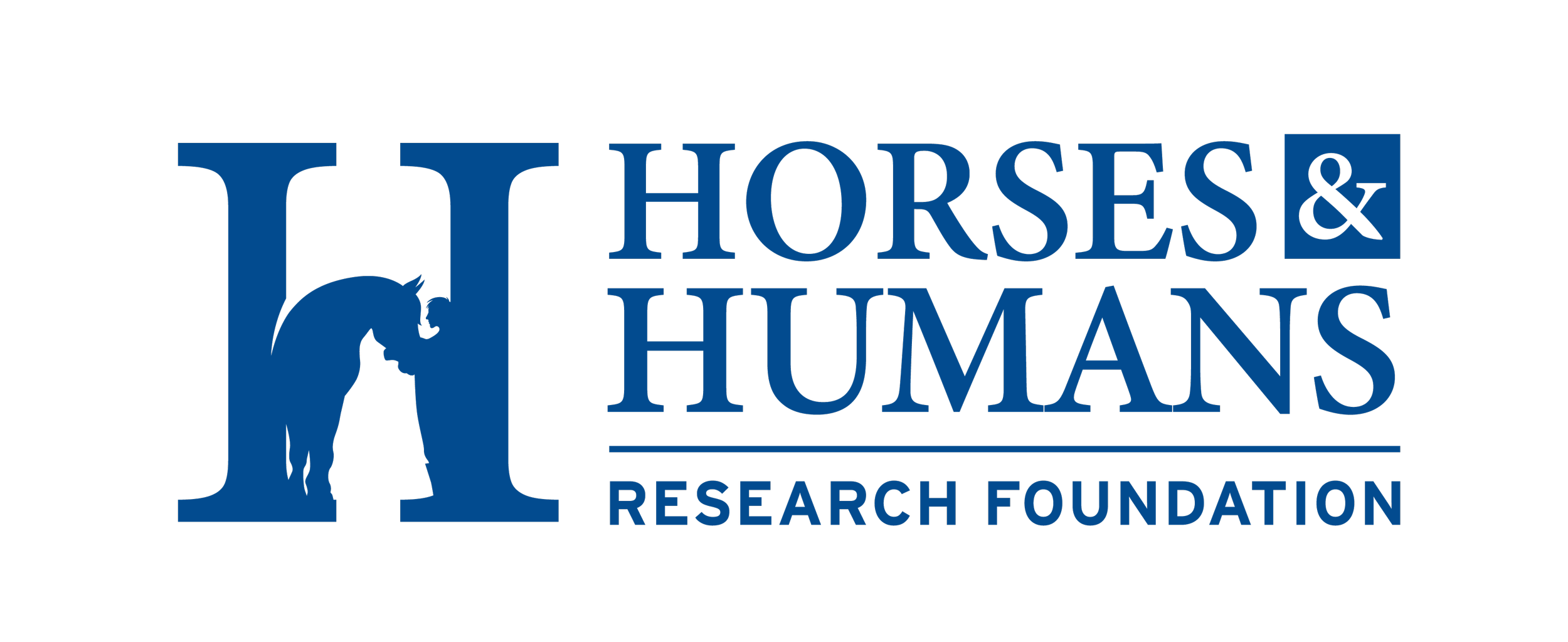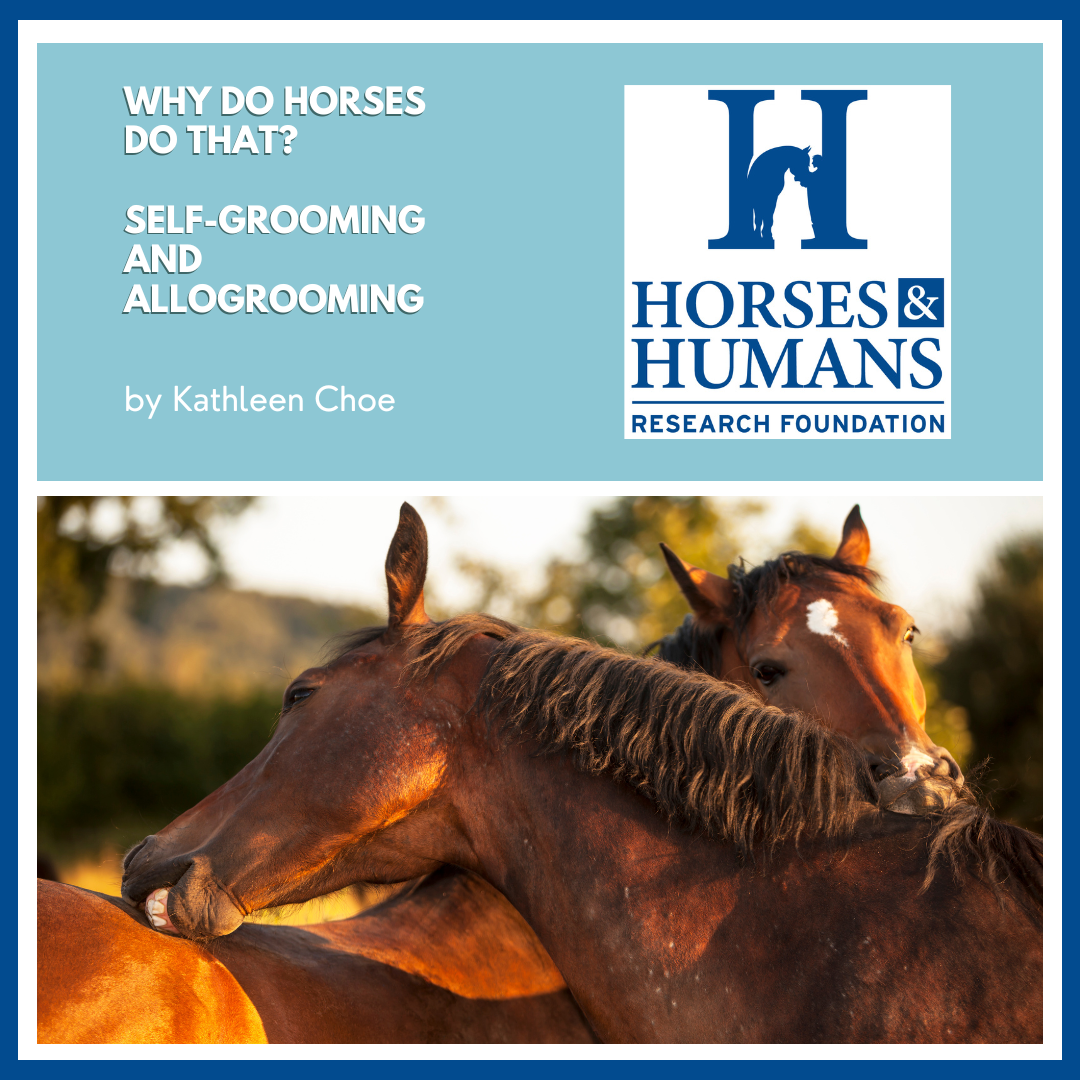Why Do Horses Do That?
Why Do Horses Do That?
Self-grooming and Allogrooming by Kathleen Choe
You may have walked past a pasture and noticed two or more horses standing side by side nibbling on each other’s withers or backs and wondered, “Why do horses do that?” This is actually one of the most common social behaviors among horses and is called “allogrooming” or mutual grooming. While horses can also accomplish this on the parts of their own bodies that they can reach with their muzzles, grooming among herd mates is thought to be an important behavior in establishing and maintaining social relationships and fostering trust and cooperation.[1]
Studies show that horses, like people, enjoy spending time with their best friends. This is often expressed by how much time they spend seeking to be in close proximity with each other, how closely they stand together, and how much time they spend grooming one another.[2]
Trainer Stacy Westfall describes mutual grooming in this way, “horses often start by scratching each other's withers but will move up and down each other's body, not only rubbing with their strong upper lip but also using their teeth to both scratch and to gently nip. Many horses seem to both agree on the amount of pressure, while others will increase the pressure and nipping until offending the other horse who generally leaves.”[3]
Mutual grooming serves other purposes besides fostering social bonds. It promotes hygiene and cleanliness as horses use their teeth and lips to remove dirt, sweat, mud and parasites such as lice, fleas and ticks from each other’s fur, which can prevent skin issues and infection. It also helps with thermoregulation, allowing horses to regulate their body temperatures more effectively by redistributing natural oils throughout the coat to act as insulation, keeping them warm in the winter by trapping a layer of air close to the skin. In the summer months, it removes excess sweat to promote evaporative cooling.
Studies have shown that allogrooming occurs more frequently during and after stressful experiences in groups of horses, suggesting that it may serve as a coping strategy.[4]
It appears to release positive chemicals like serotonin and dopamine in the body and even lower the horse’s heart rate.[5]
Allogrooming provides sensory stimulation and often leads to playful interactions between equine companions that can further enhance social connections and a sense of well-being in the herd. Sometimes when humans groom a horse, the horse may perceive this as an invitation to initiate a mutual grooming session and begin nibbling at the person doing the grooming. Horses should not be punished for engaging in what is a natural behavior for them, but instead encouraged to find another way to express their appreciation, as human skin is much less hardy and this could become a painful experience for the human grooming them!
It may be that much like getting a massage for humans, allogrooming provides a calming, regulating effect for horses that alleviates tension, eases sore muscles, and promotes physical as well as mental and emotional health.
[1] Waring, 1983
[2] Kieson E, Goma AA, Radi M. Tend and Befriend in Horses: Partner Preferences, Lateralization, and Contextualization of Allogrooming in Two Socially Stable Herds of Quarter Horse Mares. Animals (Basel). 2023 Jan 7;13(2):225. doi: 10.3390/ani13020225. PMID: 36670764; PMCID: PMC9854972.
[3] Westfall, S. You Scratch My Back, I’ll Scratch Yours. 2017. Equimed. (mutual-grooming-in-horses-you-scratch-my-back-ill-scratch-yours)
[4] Kieson, et al., 2023
[5] Feh, C, de Mazieres, J. Grooming at a preferred site reduces heart rate in horses. Animal Behaviour, Volume 46, Issue 6, 1993, Pages 1191-1194,ISSN 0003-3472. (https://doi.org/10.1006/anbe.1993.1309.)

